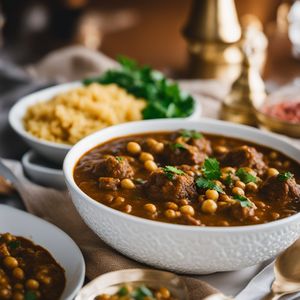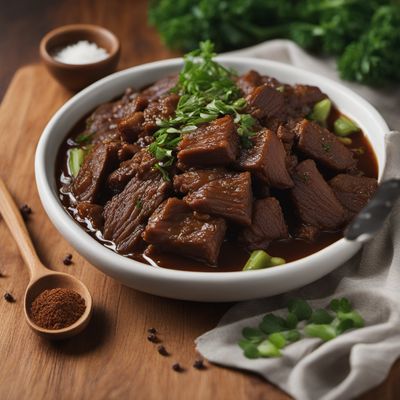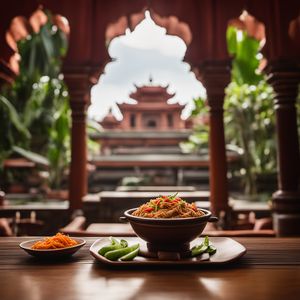
Dish
Semur
Beef stew
Semur is typically made with beef, but can also be made with chicken, lamb, or tofu for a vegetarian option. The meat is first browned and then simmered in a mixture of kecap manis, garlic, shallots, ginger, and other spices. Vegetables such as carrots, potatoes, and tomatoes are added to the stew to create a hearty and filling meal. Semur is often served with steamed rice and is a popular comfort food in Indonesia.
Origins and history
Semur is believed to have originated in Indonesia during the Dutch colonial period. The dish was influenced by Dutch stews and was adapted to include local ingredients and spices. Semur has since become a popular dish in Indonesia and is often served during special occasions and celebrations.
Dietary considerations
Semur can be made gluten-free by using a gluten-free soy sauce. It is also important to check the ingredients of the kecap manis to ensure that it does not contain any allergens such as peanuts or shellfish.
Variations
There are many variations of semur depending on the region and the cook. Some variations include using different meats such as goat or duck, or adding ingredients such as tamarind or lemongrass for additional flavor.
Presentation and garnishing
Semur can be garnished with fresh herbs such as cilantro or parsley, or with sliced chili peppers for a spicy kick. The stew can be presented in a large serving bowl or individual bowls for each guest.
Tips & Tricks
To make the sauce even richer and more flavorful, try adding a spoonful of peanut butter or coconut milk. Semur can also be made in a slow cooker for an even more convenient meal.
Side-dishes
Semur is often served with steamed rice, but can also be paired with noodles or bread. A side of pickled vegetables or a fresh salad can also help balance out the richness of the stew.
Drink pairings
A light beer or a glass of red wine can complement the flavors of semur. A sweet iced tea or a tropical fruit juice can also be a refreshing drink pairing.
Delicious Semur recipes
More dishes from this category... Browse all »

Aab gosht
Indian cuisine

Abgoosht
Iranian cuisine

Adobo
Filipino cuisine

Adobo sa gatâ
Filipino cuisine

Adobong baboy
Filipino cuisine

Adobong baka
Filipino cuisine

Adobong dilaw
Filipino cuisine

Adobong hito
Filipino cuisine


